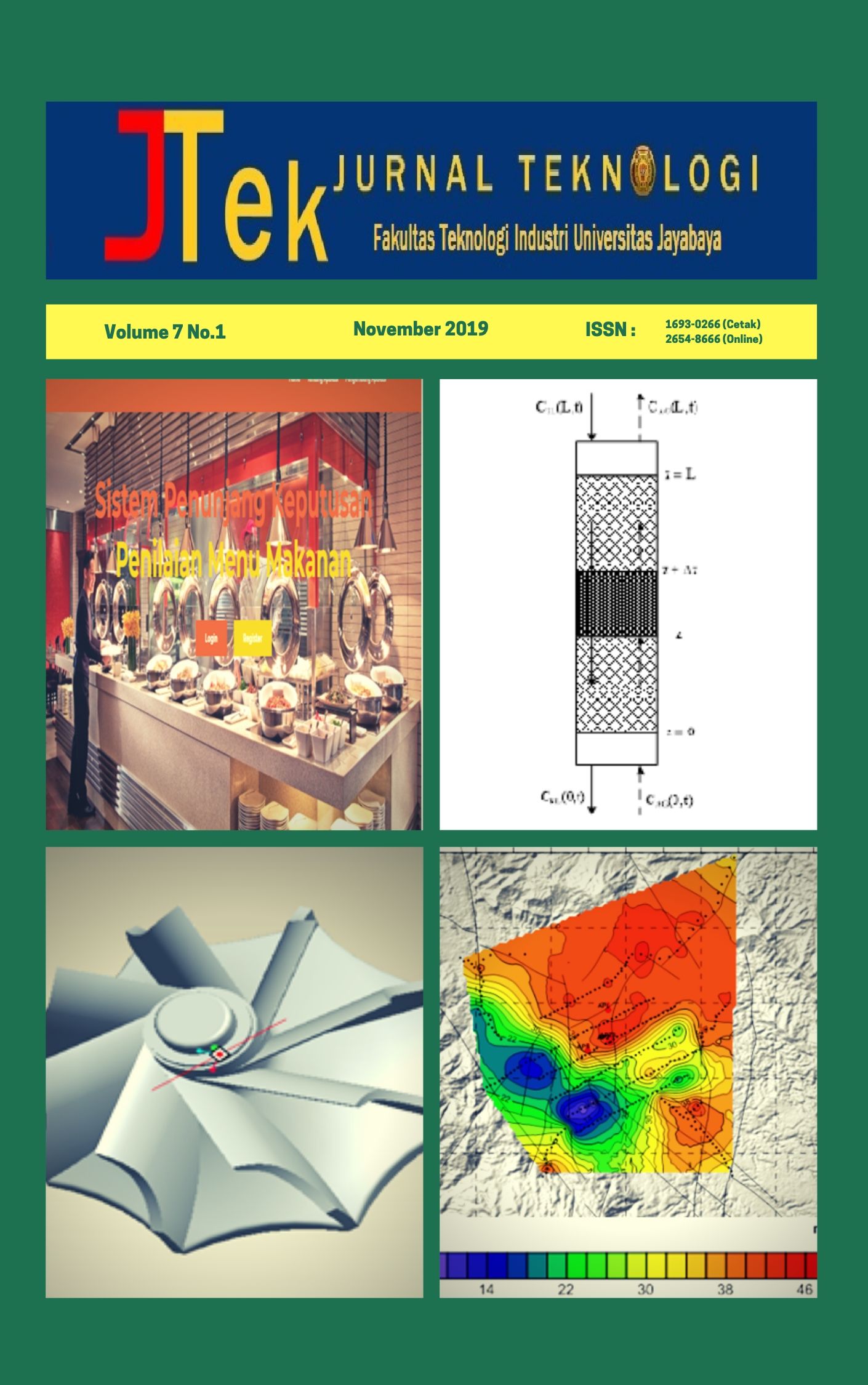Penelitian Proses Hard Chrome Plating Pada Propeller Turbocharger Berbahan Kuningan S26000
DOI:
https://doi.org/10.31479/jtek.v7i1.34Keywords:
propeller turbocharger, brass, investment casting, hardness test, microstructure test.Abstract
Propeller turbocharger berdiameter 36,47 mm dibuat dalam penelitian ini dengan teknik pengecoran investment. Material yang dipakai dalam pembentukkan propeller menggunakan kuningan dengan seri C26000. Pola propeller berbahan plastik PLA (polylactic acid) yang dicetak menggunakan 3D Printing. Molding dengan pola tersebut yang dibentuk merupakan campuran dari plaster gypsum dan pasir zirkon dengan komposisi 2:1, lalu campuran tersebut ditambahkan air dengan perbandingan 2:1 dan kemudian dituang ke dalam wadah molding berisi pola propeller. Pemanasan molding dilaksanakan dengan dua tahap. Tahap pertama bertujuan untuk melebur pola propeller plastik pada temperatur 500oC selama dua jam. Sementara itu, tahap kedua bertujuan untuk memperkeras molding pada temperatur 900oC selama dua jam. Material kuningan seri C26000 yang memiliki titik lebur 915oC, dilebur menggunakan dapur induksi dan dituang ke molding. Setelah itu, dilakukan pembersihan kemudian di-hard chrome. Pada penelitian ini, propeller kuningan yang belum di-hard chrome memiliki nilai kekerasan 85,33 ± 2,36 HRB dan yang sudah di-hard chrome bernilai 94,00 ± 2,44 HRB. Hasil struktur mikro propeller juga memperlihatkan nilai penyusutan yang ada pada proses pengecoran adalah 5,99%.Downloads
References
P. Kristanto and R. Hartadi, “Analisa Turbocharger pada Motor Bensin Daihatsu Tipe CB-23,” vol. 3, no. 1, pp. 12–18, 2001.
M. Muqeem, M. Ahmad, and A. F. Sherwani, “Turbocharging of Diesel Engine for Improving Performance and Exhaust Emissions : A Review,” IOSR J. Mech. Civ. Eng., vol. 12, no. 4, pp. 22–29, 2015.
S. K. Bohidar, P. K. Sen, and R. Bharadwaj, “STUDY OF TURBO CHARGING,” Int. J. Adv. Technol. Eng. Sci., vol. 3, no. 1, pp. 498–505, 2015.
C. D. Association, THE COPPER ADVANTAGE A Guide to Working With Copper and Copper Alloys. New York: Copper Development Association, 2013.
Taufikurrahman and Safei, “Analisa Sifat Mekanik Bahan Paduan Tembaga-Seng Sebagai Alternatif Pengganti Bantalan Gelinding pada Lori Pengangkut Buah Sawit,” J. Tek. Mesin Univesitas Kristen Petra, pp. 77–84.
A. Setiyono, “Studi Eksperimen pada Investment Casting dengan Komposisi Ceramic Shell yang Berbeda dalam Pembuatan Produk Toroidal Piston,” J. Tek. ITS, vol. 1, no. 1, 2012.
H. Sudjana, Teknik Pengecoran Jilid 3. Jakarta: Departemen Pendidikan Indonesia, 2008.
A. F. Alphanoda, “Pengaruh Jarak Anoda-Katoda dan Durasi Pelapisan Terhadap Laju Korosi pada Hasil Electroplating Hard Chrome,” J. Teknol. Rekayasa, vol. 1, 2016.
R. R. D, “PENGARUH VARIASI MEDIA CETAKAN PASIR KALI, CETAKAN PASIR CO2 DAN CETAKAN LOGAM TERHADAP HASIL PRODUK FLANGE CORAN KUNINGAN (Cu-Zn),” Universitas Muhammadiyah Surakarta, 2018.
M. A. Pratama, “Studi Eksperimen Ketahanan Korosi, Keausan, dan Kekerasan pada Material Baja Paduan SS 316 Sebagai Bahan Sterntube Seal Liners pada Kapal,” KAPAL - J. Ilmu Pengetah. Teknol. Kelaut., vol. 16, no. 1, pp. 16–22, 2019.
Downloads
Published
Issue
Section
License
The rights of publication and use of intellectual works in this journal are the full property of the publisher, while the moral rights belong to the author.
The formal legal aspects of access and utilization of each Journal of Technology articles are subjected to the Creative Commons Attribution-Share Alike (CC BY-SA) license, which means that journal content can be used freely and fairly (fair use) in a similar form even for commercial purposes.
To avoid malpractice and plagiarism in publication of article publishing, the author is asked to fill out and sign a copyright statement on the Declaration of Authenticity of the Manuscript and Copyright Transfer.






